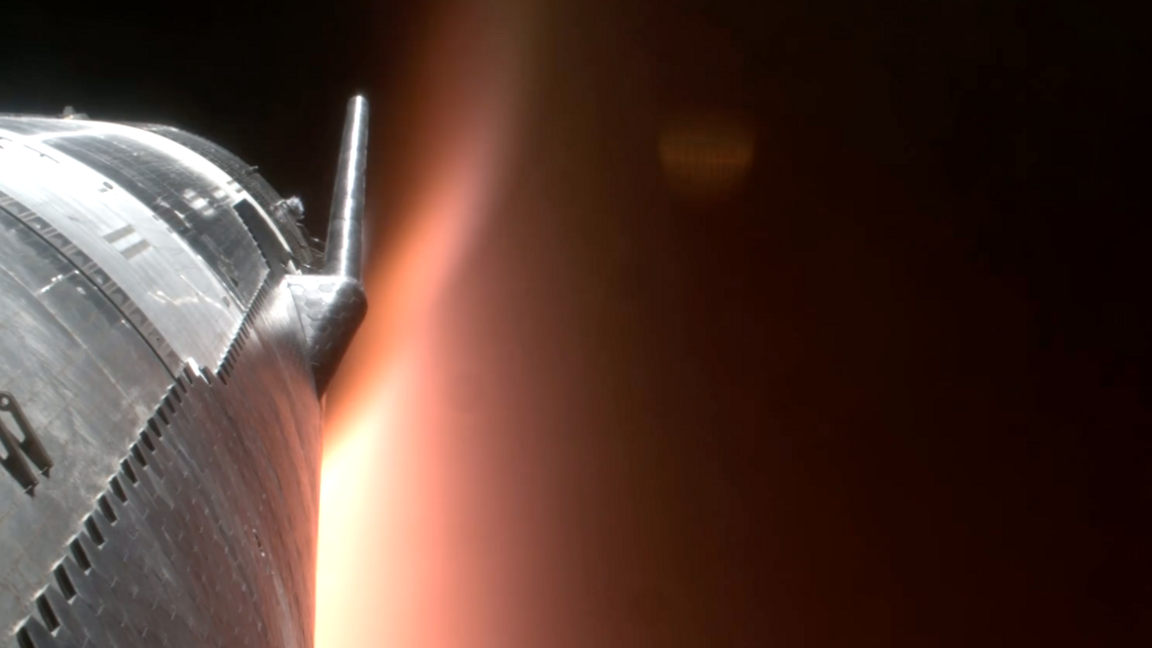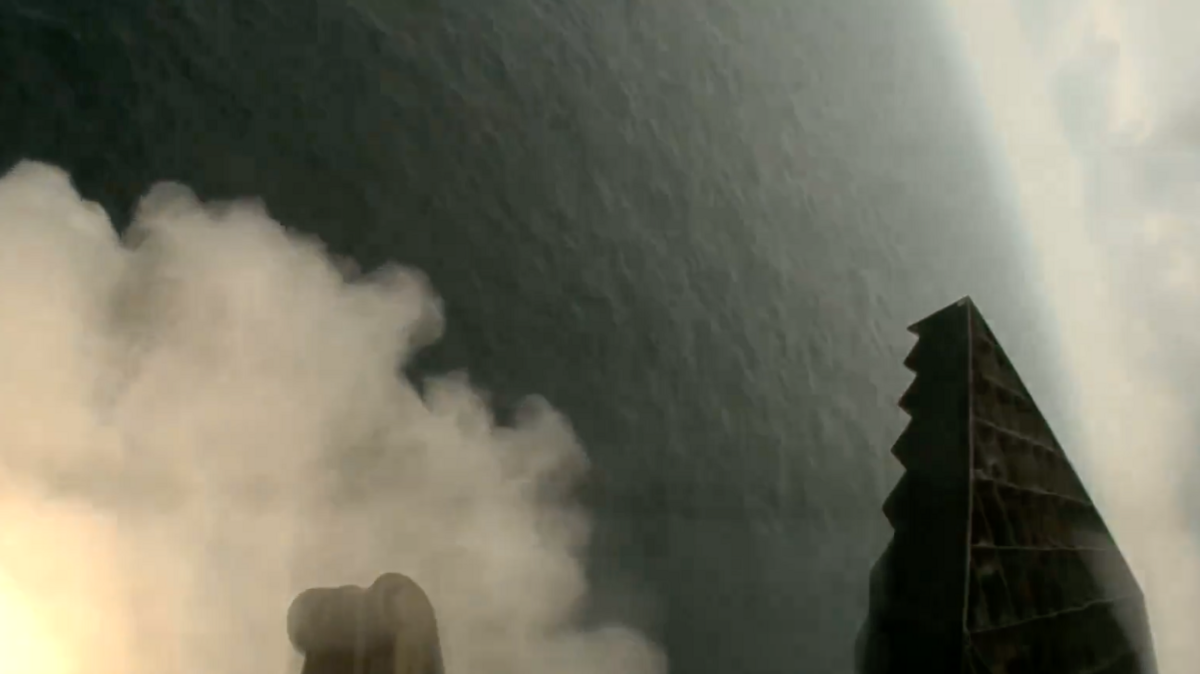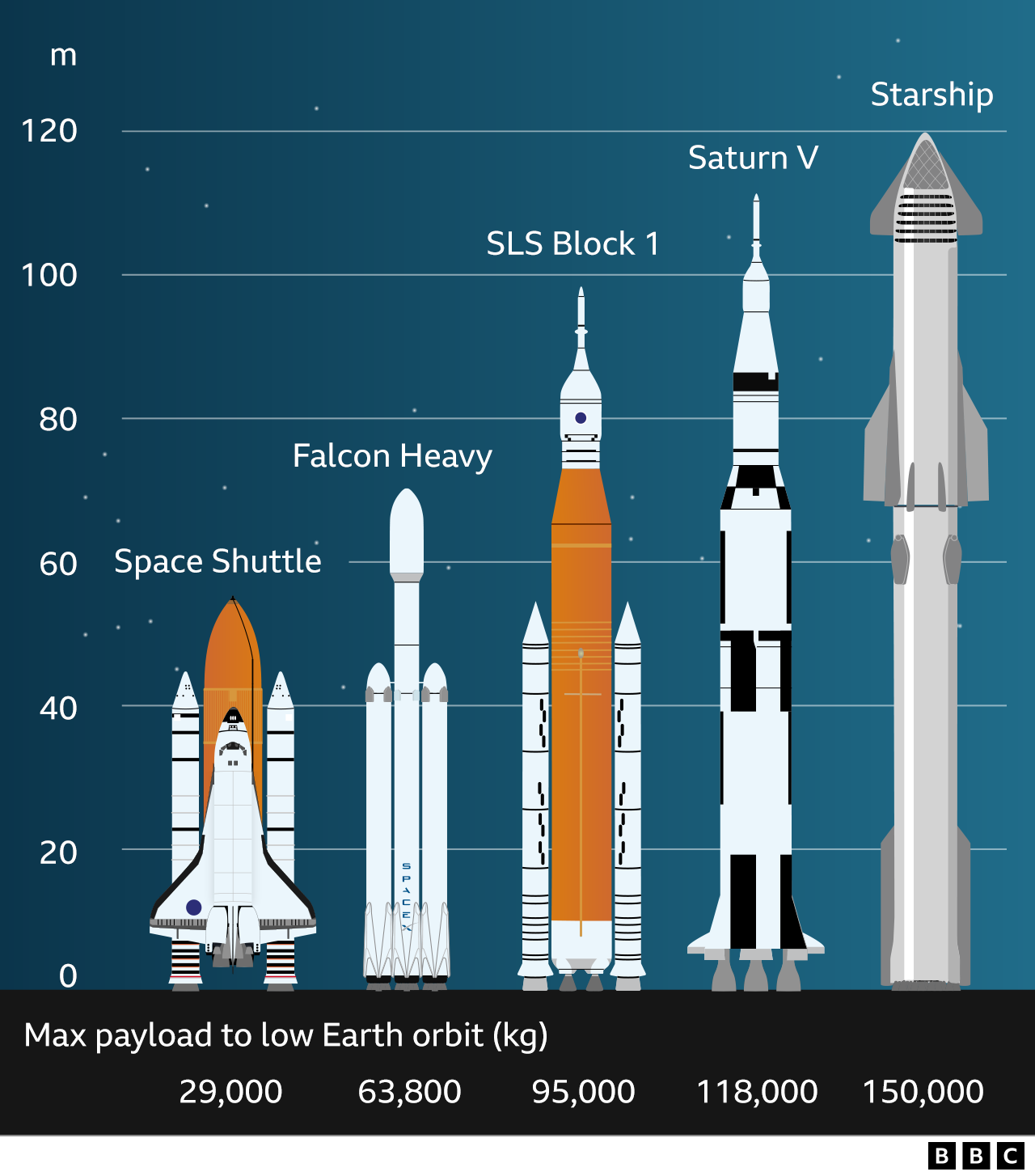Musk's Starship rocket makes breakthrough ocean landing
Watch: SpaceX's Starship makes a successful launch and splashdown
- Published
Elon Musk's mammoth new rocket system has returned to Earth in a groundbreaking fourth test flight that culminated in a first-ever soft ocean landing for the Starship vehicle.
The aim was to get the rocket's upper section - the Ship - to make a controlled return into the atmosphere and then to ditch in the Indian Ocean.
And it achieved its objective, descending broadly intact all the way to the sea surface. Video from the vehicle indicated it was falling apart at the end, but still operating.
"Splashdown confirmed! Congratulations to the entire SpaceX team on an exciting fourth flight test of Starship!" the company said on X.
Earlier in the flight, the lower booster part of the rocket was brought back down to the Gulf of Mexico, to hover just above the water.
That’s also a big step forward from previous test flights when the booster was destroyed in flight.
Elon Musk's rocket flies further but self-destructs
- Published18 November 2023
Boeing launches long-delayed astronaut capsule
- Published5 June 2024
Thursday's mission was the latest stage in the American entrepreneur and his SpaceX company's quest to develop a fully and rapidly re-useable orbital rocket system - something that would be a world first.
Starship launches from an R&D facility at Boca Chica, a small town on the Texas coastline.
The initial stages of the ascent followed the same profile as the three prior test outings, with the Ship and booster separating two and three-quarter minutes after leaving the ground.
While the Ship pressed on out over the Atlantic, the lower-stage of the rocket headed back to a drop point near shore.
Using its engines, the booster deftly brought itself to a stop above the sea surface before pitching over. The manoeuvre was a prelude to future landings back at Boca Chica itself.

As the Ship came back through the atmosphere, it experienced extreme temperatures
The Ship's difficulty is that it flies higher and faster, which means when it comes home it is exposed to the blistering temperatures of re-entry.
A colourful plasma - super-heated, ionised gas - was seen to envelop the vehicle as it dived deeper into the atmosphere. Late into the descent, heat-protection tiles started to come away; some structural elements began to glow red hot; and the camera view became obscured when the lens cracked.
But even in this ragged state, the Ship still managed to execute a virtual landing on water. Quite how finessed that landing was, future analysis of the data will tell.
Overall, however, this mission marked significant progress for Mr Musk and SpaceX, external.
"Despite loss of many tiles and a damaged flap, Starship made it all the way to a soft landing in the ocean! Congratulations @SpaceX team on an epic achievement!!" Mr Musk wrote on X.

The Super Heavy booster was brought to a hover stop just above the Gulf's waters
Starship dwarfs all previous rocket systems.
The 33 engines at its base produce 74 meganewtons of thrust. To put that in context, the US space agency's (Nasa) biggest rocket - the Space Launch System, or SLS - produces 39 meganewtons off the pad, and that's over 20% more than the old space shuttle system could generate.
If SpaceX engineers can perfect Starship, it will be revolutionary.
It's intended to operate much like an aeroplane that can be refuelled and put back in the air in quick order.
This capability, along with the heft to carry more than a hundred tonnes to orbit in one go, would radically lower the cost of space activity and make possible new types of activity.

For Elon Musk, Starship is key to realising his long-held ambition of taking people and supplies to Mars to build a human settlement. It will also assist his Starlink project which is establishing a global network of broadband internet satellites.
There are thousands of Starlink spacecraft in orbit already, but later models will be larger and heavier and Starship will be needed to get them to space.
Among the keenest observers of the test flights in Texas is Nasa.
Starship is critical to the agency's Artemis programme to put astronauts back on the Moon this decade. A version of Starship would act as the landing craft, taking the crew from lunar orbit down to the surface - and then lifting them back off again. SpaceX, however, will first have to show it can produce a safe and reliable vehicle before astronauts are permitted to climb aboard.
Nasa has scheduled late 2026 for when it would like to see boots back on the lunar surface.
"Congratulations @SpaceX on Starship's successful test flight this morning! We are another step closer to returning humanity to the Moon through #Artemis - then looking onward to Mars," said Nasa administrator Bill Nelson.
In other space news on Thursday, the Boeing company's new astronaut capsule docked with the International Space Station (ISS). Known as Starliner, the vehicle is on its first crewed test flight.
After experiencing some technical difficulties with the operation of small thrusters, the capsule drove itself on to an attachment point on the front of the ISS at 17:34 GMT.
Astronauts Butch Wilmore and Suni Williams will stay just over the week in orbit before bringing Starliner home to a landing in the southwestern US, most probably White Sands Missile Range in New Mexico.


As with earlier test flights, large crowds had gathered to watch the lift-off